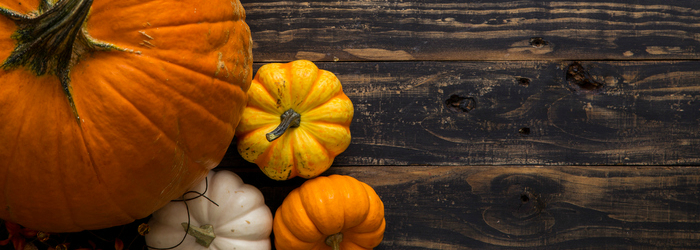How to have a delicious, sugar-free Halloween

Halloween is full of sweet treats and, for some, it is the one day of the year where children are allowed to let loose and eat as much sugar as they like. If you want to balance out their intake this year, why not try these delicious, sugar free bakes that the whole family will love this Halloween.
This article is extracted from Sarah Flower’s The Sugar-Free Family Cookbook. Sarah introduces a range of alternative ingredients that you can use in your sugar-free bakes, as well as some delicious Halloween-themed recipes.
Reduce your sweet palate
I have worked with more than 35 schools, reducing sugar intake by 40 per cent in cakes and desserts without anyone noticing any changes. You really don’t need things to be as sweet. Start gradually and reduce, allowing you and your family to get used to less sweet foods, therefore reducing sweet cravings.
Sweeteners
Xylitol – This is a really good sugar alternative, which can be used as a direct replacement for sugar, so is perfect for all your favourite recipes. Remember xylitol is very toxic to dogs.
Erythritol blends – In the UK, I use Sukrin blends or Natvia. Both are available in white sugar and icing sugar forms. Sukrin also does a lovely brown sugar alternative, called Sukrin Gold. Erythritol is not as sweet as xylitol, so producers tend to add a touch of stevia to the blend. Use as a direct replacement for sugar in your favourite recipes.
Flours
Remember that flours are carbohydrates and the aim is to keep the carbs as low as possible. You can slow the digestion of carbs down by opting for wholegrain choices, spelt or buckwheat. If you opt for white flour, these will digest faster and raise your blood sugar quicker. You will also find you will be perpetuating a sugar craving, despite using a
sugar-free sweetener, which is why it is best to opt for a more complex carb flour. In the recipes I recommend wholemeal, spelt or buckwheat. For these you will need to add baking powder in order to make them rise.
For low-carb/grain-free, you can swap the flour for almond flour or another nut flour – a combination of hazelnut flour and ground almonds works really well in cakes. I like to use either all almond flour or a 60/40 combination of almond and hazelnut. Some people find a combination of coconut flour and almond flour to be the best with a ratio of 3 parts almond flour to 1 part coconut flour, which also works really well.
You can grind your own nuts to make your own nut flours, which is by far the healthiest option. I use my Nutribullet to do this. Store ground nuts in the freezer to prevent them going rancid.
Coconut flour – If swapping to coconut flour, remember to adjust the liquid as coconut flour absorbs almost ten times its volume so if you are not careful you could have a very dry cake! I have found I have best results when baking with coconut flour. if I use 1 egg and 2 tablespoons of liquid (milk, water, buttermilk or Greek yoghurt) per 30g of coconut flour. As coconut flour is so absorbent you will need to use less coconut flour in recipes, roughly half. It does take some getting used to.
ALWAYS sieve the coconut flour before using as it can really clump up in the packaging.
The texture is always different with coconut flour, grainier and drier, but you can make quite good cakes – it just takes a little practice.
Almond flour and ground almonds – Almond flour is much finer and in cakes does give superior results, but I use ground almonds a lot and things still work out well. Almond flour is far more expensive than ground almonds. The best brand I have found in the UK is from Sukrin.
Cooking times with nut flours – Cooking times may vary when using nut flours as the mixture is a different consistency. Use my timings as a guide and check every 5 minutes after this time if they are not cooked. Please note that when using nut flours, your bakes may be very crumbly until they are completely cold. This is particularly the case with cookies, which harden as they cool, so try not to move them too much until they are completely cold.
Cake fillings and toppings
There are some products on the market to make your own icing, such as Natvia icing mix and a nice Sukrin blend. Both work well and are a great substitute for icing sugar. I will leave that to you to experiment with, meanwhile, here are some sugar-free toppings I love, but remember, these may have a more limited shelf-life, or have to be kept in the fridge – to be honest, they never last long enough to go bad in our house!
You can of course use fresh cream and maybe add a few berries to a lovely sponge.
COCONUT MACAROON BISCUITS
These are slightly different to the coconut macaroons that are piled high with fluffy coconut. These are more like a biscuit and are great on their own or topped with some melted dark chocolate. This recipe is not good with stevia, so use erythritol blend or xylitol. Why not add a few drops of orange food colouring to these delicious, sugar-free macaroon recipe.
Makes 12
Ingredients
4 egg whites
120g erythritol blend or xylitol
300g unsweetened desiccated coconut
Method
1. Preheat the oven to 160ºC/gas mark 3. Line a baking tray with baking parchment.
2. Whisk the egg whites until light and fluffy.
3. Blend in the sweetener and coconut and combine gently.
4. Place a spoonful of the mixture onto the parchment. Using the back of a dessertspoon, press down on the mixture and spread gently to form a flatter circle. Continue until you use all the mixture.
5. Place in the oven and cook for 10 minutes or until golden. Watch them carefully as you do not want them to burn.
6. Remove from the oven and place on a cooling rack. Once cooled, store in an airtight tin.
Nutritional values
15.6g fat, 1.6g net carbohydrates, 5.3g fibre, 2.6g protein per biscuit.
SUGAR-FREE BERRY MUFFINS
I love berries. These muffins are far better if you use fresh berries rather than frozen, as frozen tend to be a bit too wet. Why not add a few drops of green food colouring to contrast with the berries and create a truly scary bake.
Makes 12
Ingredients
150g butter
100g erythritol blend or xylitol (or stevia to taste)
3 eggs, beaten
175g wholemeal self-raising, spelt or buckwheat flour
1 tsp baking powder
80g mixed berries (blueberries, redcurrants, raspberries etc.)
Method
1. Preheat the oven to 180ºC/gas mark 4.
2. Beat the butter and sweetener together until light and fluffy.
3. Gradually add the eggs with a tablespoon of flour then fold in the sifted flour and baking powder.
4. Add the mixed berries and fold in carefully.
5. Spoon into muffin cases.
6. Bake on the middle shelf of the oven for 20 minutes, or until firm and golden.
Nutritional values
11.9g fat, 9.9g net carbohydrates, 1.6g fibre, 3.6g protein per muffin.
For grain free, swap the grain flour for 125g almond flour and 30g coconut flour or hazelnut flour. (You can also use 175g almond flour if you prefer. If you use all coconut flour, you only need 120g and add another 2 eggs and 3 tbsp of milk.)
Sarah Flower is trained in nutrition and nutritional medicine and author of 15 books, including the bestselling The Everyday Halogen Oven Cookbook. Sarah and her young son have lived on a sugar free diet for the last 12 months. As a nutritionist and journalist, Sarah has written many articles on diets, including sugar free, grain free, low carb and high protein. The Sugar-Free Family Cookbook is available now.








